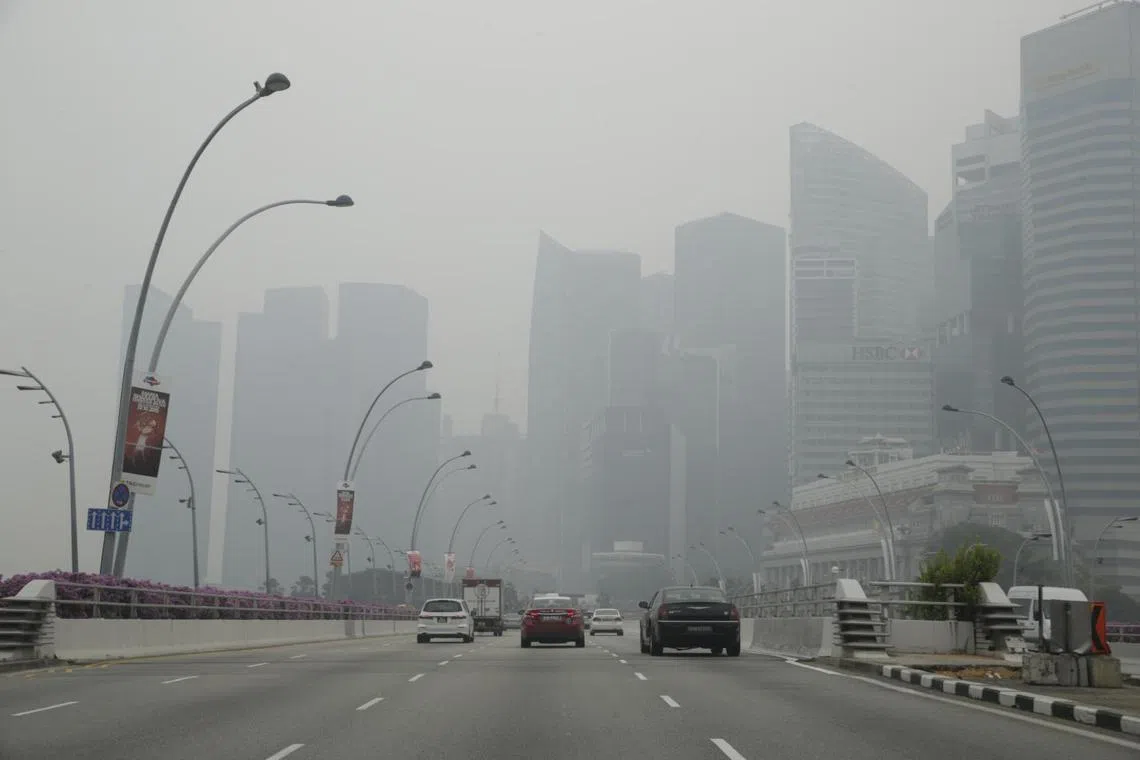For subscribers
Prepping for the haze, the Covid-19 way
Higher risk of it returning in 2023, but we’ve got the lessons learnt: masks, working from home, healthcare resources – and tracking
Sign up now: Get ST's newsletters delivered to your inbox

The skyline shrouded in haze at 6pm on 23 October 2015 when the 3-hr PSI was 217.
PHOTO: ST FILE
Steve Yim
Follow topic:
It’s that time of year, and while it is not here yet, “it” is on everyone’s lips – the haze. Will air pollution from farmers’ annual burn-offs in the region cast a smoky cloud over Singapore this dry season? If so, how ready are we to tackle this recurring environment challenge?
Transboundary haze is a serious health hazard. High levels of particulate matter suspended in the air can irritate the eyes, nose and throat. In serious cases, it can cause lung and heart diseases such as asthma and stroke, and even premature deaths.

